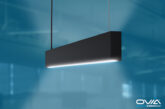
Andy Douglas, MD at Timeguard, examines the benefits of Wi-Fi integrated devices for customers who want smart control without significant expense.
No one can deny the attraction of a fully automated, integrated home to deliver top levels of efficiency and ease of living. Installers are clamouring to acquire the skills they need to deliver real intelligence in building control, and employers are playing their part in supporting skills development with initiatives like CEDIA’s NextGen.
Meanwhile, most of our homes aren’t currently geared up for advanced home automation. High-end integrated control, where devices work in harmony with each other, usually requires rewiring that involves going beyond adding a neutral to the switch outlets and adding significant cost to a project. You might imagine that any new build or recent rewiring would already be smart tech-ready, but don’t bank on it just yet.
So, what is the appropriate technology solution for customers who want smart control without the major expense?
The answer is good quality Wi-Fi technology, combining reliable products and a consistently reliable third-party control App like TuYa (manufacturers’ own Apps may be limited and might not have the development finance of a global platform like TuYa to maintain reliability and add new features).
A catch-all solution
Wi-Fi has proved to be the ideal answer, giving App-based control of devices from within the home or anywhere in the world where you have an internet connection or Wi-Fi signal. Bluetooth, Zigbee etc. have a role in some projects, but it is Wi-Fi that is the catch-all, covering all the bases to give users both close-quarters control and remote access.
Popular Wi-Fi controlled devices include high-quality web cams, external lighting, detectors, timers, switches and wall sockets. On/off, time control, detection ranges etc. can all be controlled remotely via a smartphone from the armchair, on the commute home or at the holiday villa.
Users will get feedback on switching status on their App, so they can relax, knowing that any devices employed at home are continuing to do their job.
Integrating other devices
Product developers are meeting the demand for inter-working between devices on Wi-Fi networks. Indirect load activation, where the load is physically connected via the switched live, means that another compatible smart device can be triggered wirelessly.
The new Timeguard Wi-Fi controlled twin LED floodlights offer this feature so, for instance, someone triggering the PIR detector could cause several other lights around the property – indoors and out – to switch on.
Product grouping
This is a useful feature for linking lighting circuits together wirelessly if the installer wants devices, such as lights and/or a room heater to switch on/off together at the touch of a button. Product grouping can be easily set-up within the TuYa App by creating a group.
Yes, it’s a toe in the water exercise compared to mansions with home cinemas and the like, but end users love the flexibility and control offered by smart home Wi-Fi devices. More to the point, they’re also different and fun to install/set-up.
Browse Timeguard’s range of Wi-Fi control devices here











